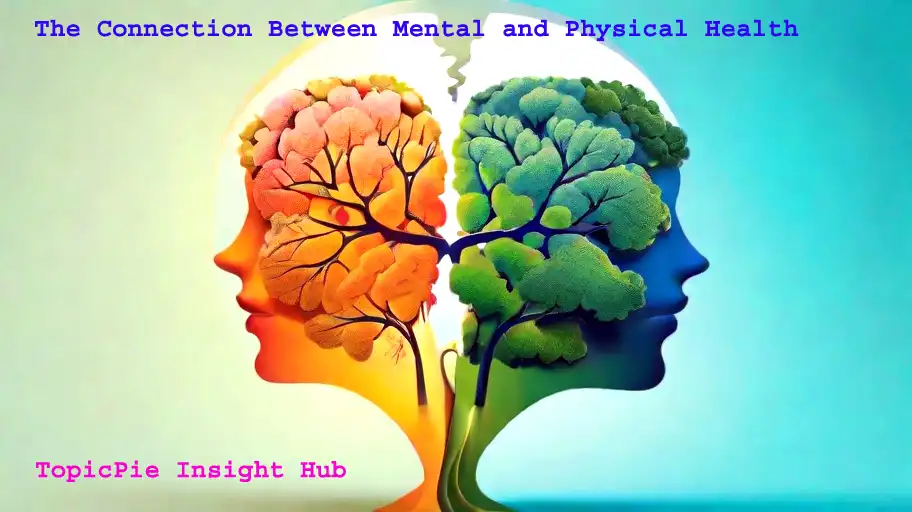Introduction:
Mental health or mental wellness is a fundamental aspect of human well-being, and its significance cannot be overstated. It encompasses our emotional, psychological, and social states, influencing how we think, feel, and behave in the world. Mental health not only determines our ability to manage everyday stresses and make rational decisions but also shapes our capacity to engage meaningfully with society and contribute positively to our communities.
In a world that constantly demands more from its citizens, maintaining a state of equilibrium within the realm of mental wellness is of paramount importance. As we navigate life’s intricate web of challenges, from personal relationships to professional aspirations, our mental wellness becomes the cornerstone of our resilience and adaptability.
However, mental wellness issues have been rapidly gaining ground, affecting an increasing number of individuals across diverse backgrounds. The prevalence of these conditions knows no boundaries and transcends age, race, gender, or socioeconomic status. According to the World Health Organization (WHO), an alarming one in five adults in the United States experiences some form of mental illness each year, illustrating the magnitude of the issue.
In this era of heightened awareness and understanding, it is essential to shed light on the importance of mental health and address the pressing prevalence of mental wellness issues. As we explore the impact of the COVID-19 pandemic, delve into specific conditions, and examine the road to recovery and support, we embark on a journey to underscore the significance of safeguarding our mental well-being in the post-COVID-19 world. It is not merely an option but an imperative, as together, we can build a resilient society that prioritizes mental health for all.
What Is Mental Health?
Defining Mental Health:
Mental health, often misconstrued and marginalized, encompasses our emotional, psychological, and social well-being. It is not merely the absence of mental disorders but the state in which an individual can effectively cope with life’s stresses, make sound decisions, maintain fulfilling relationships, and work productively. Mental health is not a static concept; it’s dynamic, evolving, and integral to our overall health and quality of life.
A crucial aspect of mental health is resilience, which enables individuals to adapt to life’s challenges, setbacks, and adversities. It’s a protective factor against the development of mental wellness disorders and plays a fundamental role in one’s capacity to bounce back from traumatic experiences.
The Connection Between Mental and Physical Health:
The mind and body are intricately linked, with their influences extending to one another. This connection between mental and physical health is undeniable, and disruptions in one domain can lead to issues in the other. For example, someone experiencing chronic stress or anxiety may manifest physical symptoms like tension, headaches, or gastrointestinal problems.
Conversely, physical health issues can significantly impact one’s mental well-being. Conditions such as chronic pain, severe illnesses, or disabilities can lead to depression, anxiety, and a reduced quality of life. This dual relationship underscores the importance of considering mental and physical health holistically.
Furthermore, a well-maintained physical state contributes positively to mental health. Regular exercise releases endorphins, the body’s natural mood lifters, which can reduce stress and promote emotional well-being. Proper nutrition ensures the brain receives essential nutrients, vital for cognitive function and emotional stability. Adequate sleep is another critical component of good mental health, as sleep disturbances can exacerbate mental wellness conditions like depression and anxiety.
Our well-being is closely tied to our mental wellness. It’s the foundation for resilience, the key to adapting to life’s challenges, and the bridge that connects our mental and physical states. Recognizing this interconnectedness, we embark on a journey to understand the profound impact of mental health, especially in the post-COVID-19 era, and to explore the strategies and support systems necessary to ensure that mental health remains a priority for individuals and society as a whole.

Understanding Mental Health Conditions:
Common Mental Health Conditions:
Mental health conditions encompass a broad spectrum of disorders that affect the way we think, feel, and behave. While these conditions can vary in their severity and impact, some are more prevalent and widely recognized than others. Understanding these common mental wellness conditions is essential in addressing the challenges they pose.
1. Depression: Depression is one of the most prevalent mental health conditions, affecting millions of people worldwide. This condition is marked by enduring emotions of sadness, despair, and a diminished interest in previously enjoyable activities. Physical symptoms such as fatigue, changes in appetite, and sleep disturbances often accompany this condition.
2. Anxiety Disorders: Anxiety disorders include a range of conditions such as generalized anxiety disorder, panic disorder, social anxiety disorder, and specific phobias. They are marked by excessive worry, fear, and apprehension, often accompanied by physical symptoms like a racing heart, sweating, and shortness of breath.
3. Bipolar Disorder: Bipolar disorder involves extreme mood swings, cycling between periods of high energy, excitement, and impulsivity (mania or hypomania) and periods of low energy, sadness, and a loss of interest (depression). These mood swings can have a significant impact on one’s life and relationships.
4. Schizophrenia: Schizophrenia is a severe mental disorder characterized by distorted thinking, emotions, and behavior. People with schizophrenia may experience hallucinations, delusions, and difficulty distinguishing between reality and their internal experiences.
5. Eating Disorders: Eating disorders like anorexia nervosa, bulimia nervosa, and binge-eating disorder are marked by abnormal eating habits and an unhealthy obsession with food, weight, or body image. These conditions can lead to severe physical and psychological health issues.
6. Substance Abuse Disorders: Substance abuse disorders involve the compulsive use of drugs or alcohol, often leading to addiction. These conditions can result in severe health problems, including overdose and death.
Stigma Surrounding Mental Health:
Despite the prevalence of mental health conditions, stigma remains a significant barrier to recognizing, seeking help for, and effectively managing these disorders. Stigma is a societal construct that is deeply ingrained in many cultures and perpetuates stereotypes and discrimination against individuals with mental wellness conditions. It often manifests as:
1. Negative Stereotypes: People with mental health conditions may be unfairly labeled as “crazy” or “dangerous,” perpetuating fear and misunderstanding.
2. Social Isolation: Stigma can lead to the isolation of those with mental wellness conditions, as friends, family, and communities may distance themselves, worsening feelings of loneliness and despair.
3. Discrimination: In some cases, individuals with mental health conditions face discrimination in education, employment, and housing, limiting their opportunities and quality of life.
4. Self-Stigma: Individuals experiencing mental health challenges may internalize the negative stereotypes, leading to feelings of shame and self-doubt. This self-stigma can be a significant barrier to seeking help.
Addressing the stigma surrounding mental wellness is crucial in providing support and treatment to those in need. Public awareness campaigns, education, and open conversations about mental wellness can help break down these barriers. By promoting understanding and empathy, we can create a more inclusive society that supports individuals in their mental health journeys.
Impact of COVID-19 on Mental Health:
The COVID-19 pandemic, an unprecedented global crisis, has had far-reaching consequences, extending beyond the realm of physical health. As the world grapples with the virus, the mental wellness of populations around the globe has come under increasing strain. The pandemic has created a perfect storm of challenges that have profoundly affected mental well-being, resulting in a significant increase in various mental health issues.
Pandemic-Induced Stress and Anxiety:
The outbreak of COVID-19, an invisible threat with unpredictable consequences, has triggered widespread fear and anxiety. The uncertainty surrounding the virus, coupled with the constant stream of pandemic-related news, has led to elevated stress levels. People have been concerned about their own health, the well-being of their loved ones, and the future in the face of an evolving crisis. The fear of contracting the virus and the consequences of illness or loss have taken a considerable toll on mental health.
Moreover, the necessary public health measures, such as lockdowns, quarantines, and social distancing, have further heightened stress and anxiety. Isolation and restrictions on daily life have disrupted routines and social connections, exacerbating feelings of uncertainty and vulnerability.
Social Isolation and Loneliness:
One of the most profound mental health impacts of the pandemic has been the forced social isolation and resulting loneliness. To contain the spread of the virus, individuals have been required to stay at home, avoid gatherings, and limit physical contact with others. While these measures have been essential from a public health perspective, they have created a sense of social disconnection.
Human beings are inherently social creatures, and social interactions are crucial for mental well-being. Loneliness, an emotional response to isolation, can lead to a range of mental wellness issues, including depression and anxiety. The absence of in-person connections, whether with family, friends, or colleagues, has been challenging for many, particularly those who live alone.
Economic Hardship and Job Loss:
The economic consequences of the pandemic have been significant and are closely linked to mental wellness challenges. Many individuals have faced economic hardship due to job loss, business closures, and financial instability. Unemployment or reduced income has led to financial stress, anxiety about the future, and even potential loss of housing and other basic needs.
Economic challenges can amplify feelings of helplessness and hopelessness, both of which are associated with conditions like depression. The strain of managing financial difficulties while dealing with the emotional toll of the pandemic can be overwhelming.
Disrupted Access to Mental Health Services:
At a time when the demand for mental health services has been increasing, access to such services has become more challenging. Lockdowns and social distancing measures have led to the closure or reduced operation of mental health clinics and facilities. In-person therapy and support groups have been disrupted.
The rapid shift to remote work and telehealth services has not been without challenges. While teletherapy and virtual consultations have helped bridge some gaps, not everyone has equal access to these services. Technological limitations, such as a lack of internet connectivity or devices, have posed barriers to accessing online mental wellness support.
Additionally, the demand for mental health services has surged, creating substantial waiting lists and stretched resources. This, in turn, can lead to delayed or inadequate care for individuals in distress.
The mental wellness impact of the COVID-19 pandemic is a complex and evolving challenge. The stress, anxiety, social isolation, and economic hardship caused by the crisis have created a perfect storm for the emergence and exacerbation of mental health issues. Addressing this crisis requires a multi-faceted approach, including increased access to mental wellness services, public awareness campaigns, and ongoing support for individuals struggling with their mental well-being.
Specific Mental Health Conditions in the Post-COVID-19 Period
The post-COVID-19 period has left a profound mark on the mental health landscape. The pandemic and its associated challenges have given rise to a surge in various mental wellness conditions, affecting individuals across the globe. In this section, we delve into specific mental wellness conditions that have been notably impacted by the pandemic, shedding light on their characteristics, prevalence, and the challenges they pose for individuals striving to cope with the new normal.
Post-traumatic Stress Disorder (PTSD):
Post-traumatic Stress Disorder (PTSD) is a mental health condition that can develop in the aftermath of a traumatic event. The COVID-19 pandemic, marked by unprecedented uncertainty and fear, has created an environment ripe for the emergence of PTSD. This condition can affect not only those who have contracted the virus but also individuals who have experienced the trauma of losing loved ones, or healthcare workers who have faced harrowing situations on the front lines.
Symptoms of PTSD:
1. Reliving the traumatic event: Flashbacks, nightmares, and intrusive thoughts about the traumatic event.
2. Avoidance: Avoidance of places, people, or situations that remind the individual of the traumatic experience.
3. Negative changes in mood and thinking: Feelings of guilt, blame, or estrangement from others, as well as a lack of interest in activities once enjoyed.
4. Arousal and reactivity: Heightened irritability, aggression, hypervigilance, and an exaggerated startle response.
The post-COVID-19 period has seen a notable increase in the prevalence of PTSD, affecting not only individuals directly exposed to the virus but also those who have been emotionally impacted by the pandemic’s events.
Depression:
Depression, a pervasive mood disorder, has seen a substantial rise during the post-COVID-19 period. The uncertainty, social isolation, and economic hardship brought about by the pandemic have contributed to a surge in depressive symptoms. Feelings of sadness, hopelessness, and a lack of interest in activities that once brought joy are common experiences among those grappling with pandemic-induced depression.
Symptoms of Depression:
1. Persistent sadness: Overwhelming feelings of sadness or emptiness.
2. Loss of interest: Reduced interest or pleasure in activities and hobbies.
3. Changes in appetite and weight: Significant changes in weight or appetite, either increased or decreased.
4. Sleep disturbances: Insomnia or oversleeping.
5. Fatigue and low energy: Profound tiredness and a lack of motivation.
6. Feelings of worthlessness: Excessive guilt or self-blame.
7. Difficulty concentrating: Problems with focus, memory, and decision-making.
8. Thoughts of death or suicide: Frequent contemplation of death, suicidal thoughts, or actual suicide attempts characterize this aspect of the condition.
The economic impact of the pandemic, with job losses and financial stress, has been particularly influential in driving the increase in depression cases. Additionally, the experience of loss and grief due to the virus has amplified the emotional toll on individuals’ mental well-being.
Anxiety:
Anxiety disorders, characterized by excessive worry, fear, and apprehension, have also seen a surge during the post-COVID-19 period. The pandemic, marked by unpredictability and fear of the virus, has contributed to heightened anxiety levels. Individuals are anxious about their health, the health of loved ones, and the general uncertainty of the situation.
Symptoms of Anxiety:
1. Excessive worry: Uncontrollable and persistent worry about various aspects of life.
2. Physical symptoms: Physical manifestations of anxiety, such as a racing heart, sweating, trembling, and shortness of breath.
3. Restlessness: An inability to sit still and a constant feeling of restlessness.
4. Irritability: Increased irritability and difficulty in managing stress.
5. Difficulty concentrating: Challenges in focusing and making decisions.
6. Muscle tension: Persistent muscle tension and aches.
7. Sleep disturbances: Problems falling asleep, staying asleep, or experiencing restful sleep.
The ongoing uncertainty of the pandemic, including concerns about new variants and the efficacy of vaccines, has been a significant source of anxiety. The general climate of fear has contributed to a substantial increase in anxiety-related conditions.
Obsessive-Compulsive Disorder (OCD):
Obsessive-Compulsive Disorder (OCD) is a mental health condition characterized by the presence of intrusive, repetitive thoughts and behaviors aimed at reducing distress. The pandemic has amplified OCD symptoms in some individuals. The fear of contamination, strict hygiene measures, and obsessions about cleanliness have been a common manifestation of pandemic-induced OCD.
Symptoms of OCD:
1. Obsessions: Intrusive and distressing thoughts, images, or urges.
2. Compulsions: Compulsions refer to repetitive actions or mental activities undertaken to alleviate the distress triggered by obsessions.
3. Time-consuming: Significant time spent on compulsions, leading to interference with daily life.
4. Interference: Compulsions can lead to significant interference with daily functioning and activities.
The pandemic has exacerbated OCD symptoms, as individuals may find themselves compelled to engage in excessive cleaning, washing, or checking behaviors due to fear of infection. This intensification of symptoms has been a significant challenge for those dealing with OCD.
Eating Disorders:
During the post-COVID-19 period, eating disorders like anorexia nervosa, bulimia nervosa, and binge-eating disorder have seen a significant increase. The pandemic has created an environment ripe for the development or worsening of these disorders. Individuals have faced increased stress, loneliness, and changes in eating patterns during lockdowns.
Common Types of Eating Disorders:
1. Anorexia Nervosa: Characterized by extreme food restriction, leading to significant weight loss.
2. Bulimia Nervosa: Involves episodes of excessive eating followed by compensatory behaviors, such as vomiting or excessive exercise.
3. Binge-Eating Disorder: Binge-Eating Disorder involves episodes of excessive food consumption, typically accompanied by a sense of loss of control.
The pandemic’s emotional toll, coupled with disruptions in daily routines and stressors related to health and economic stability, has been linked to the onset or exacerbation of eating disorders.
Substance Abuse Disorders:
The pandemic-induced stress and isolation have led to an increase in substance abuse disorders. Individuals have turned to drugs or alcohol as a means of coping with the emotional challenges of the pandemic.
Substances Commonly Abused:
1. Alcohol
2. Tobacco
3. Prescription Drugs
4. Illicit Drugs
The pandemic’s strain on mental health and the ease of access to substances have contributed to the escalation of substance abuse disorders. The isolation and disruption of daily routines have made it more challenging for individuals to seek help for these issues.
The post-COVID-19 period has witnessed a substantial increase in various mental wellness conditions. The fear, uncertainty, social isolation, and economic hardships brought about by the pandemic have all contributed to the surge in conditions like PTSD, depression, anxiety, OCD, eating disorders, and substance abuse disorders. Addressing these challenges requires not only increased access to mental health services but also a broader societal effort to reduce the stigma surrounding mental health issues and promote resilience and coping strategies.
Risk Factors for Mental Health Problems in the Post-COVID-19 Period:
The post-COVID-19 period has ushered in a wave of mental health challenges, affecting a wide cross-section of society. While the pandemic itself has undoubtedly played a significant role in the rise of mental wellness issues, certain risk factors have exacerbated the situation for specific groups. Understanding these risk factors is crucial in developing targeted strategies to support those most vulnerable to mental health problems.
1. Experiencing COVID-19 Infection
Individuals who have experienced COVID-19 infection face a unique set of challenges that can impact their mental health. The physical symptoms, isolation, and fear of severe illness or death can lead to emotional distress. The lingering effects of the virus, often referred to as “long COVID,” can include persistent symptoms such as fatigue, brain fog, and respiratory problems. These physical symptoms can contribute to anxiety and depression.
Moreover, the stigma surrounding COVID-19 can further burden those who have been infected. The fear of being shunned or blamed for their illness can lead to feelings of shame and isolation, which are detrimental to mental well-being.
2. Healthcare Workers:
Healthcare workers have been at the forefront of the battle against COVID-19, facing enormous physical and emotional demands. They have witnessed high mortality rates, worked extended hours, and often grappled with limited resources and personal protective equipment shortages. The stress, burnout, and trauma experienced by healthcare professionals during the pandemic have significantly increased their risk of developing mental health problems.
The fear of contracting the virus, the emotional toll of losing patients, and the strain on work-life balance have all contributed to the increased risk of mental wellness issues among healthcare workers. The mental wellness of these individuals is of paramount importance, as they play a crucial role in the ongoing response to the pandemic.
3. People with Pre-Existing Mental Health Conditions:
Individuals with pre-existing mental health conditions, such as anxiety, depression, or bipolar disorder, are at a heightened risk of experiencing worsening symptoms during the post-COVID-19 period. The challenges posed by the pandemic, including social isolation, financial stress, and fear of the virus, can exacerbate existing conditions.
Disruptions in regular mental wellness care services and delays in treatment due to lockdowns or strained healthcare resources have further exacerbated the struggles of this group. The need for ongoing support and timely access to mental health services is paramount to prevent a worsening of their conditions.
4. Socially Disadvantaged Groups:
The social and economic disparities that existed prior to the pandemic have been amplified during the post-COVID-19 period. Socially disadvantaged groups, such as people of color, individuals living in poverty, and those with disabilities, are at an increased risk of developing mental health problems.
These groups often face challenges related to limited access to healthcare, job instability, housing issues, and systemic discrimination. The pandemic has disproportionately affected these communities, resulting in higher infection rates, economic hardships, and reduced access to resources. These stressors have significantly contributed to the increased prevalence of mental health issues in socially disadvantaged groups.
The post-COVID-19 period has brought forth numerous risk factors that have contributed to the rise of mental wellness problems. Experiencing COVID-19 infection, the unique challenges faced by healthcare workers, the vulnerability of individuals with pre-existing mental health conditions, and the social and economic disparities in socially disadvantaged groups all play a role in the mental wellness landscape. Addressing these risk factors requires a multi-faceted approach that includes increased access to mental wellness services, destigmatization of mental health issues, and efforts to reduce societal inequalities.
How to Support Your Mental Health in the Post-COVID-19 Period:
The post-COVID-19 period has left a profound impact on the mental wellness of people worldwide. The challenges brought on by the pandemic, including isolation, fear, and economic stress, have prompted a growing concern for mental well-being. As we navigate this new normal, it’s essential to prioritize mental health and implement strategies to support it effectively.
1. Self-Compassion and Acknowledging Challenges:
One of the first steps in supporting your mental health in the post-COVID-19 period is practicing self-compassion and acknowledging the challenges you’ve faced. The pandemic has brought about unprecedented difficulties, and it’s vital to recognize that experiencing stress, anxiety, or sadness is a natural response to these challenges.
Self-compassion: Treat yourself with the same kindness and understanding that you would offer a friend facing similar difficulties. Practice self-compassion and refrain from self-judgment.
Acknowledge challenges: Confronting your emotions and acknowledging the difficulties you’ve encountered is a crucial aspect of moving forward. Avoiding or denying your feelings can hinder your ability to address them effectively.
2. Social Support and Connection:
Social support is a cornerstone of mental health and well-being. Building and maintaining meaningful connections can provide a strong foundation for emotional resilience.
Connect with friends and family: Make an effort to reach out to loved ones. Even if physical distancing is necessary, staying connected through calls, video chats, or socially distant outdoor meetings can help combat loneliness and strengthen your support system.
Join support groups: Many communities offer support groups for individuals facing similar challenges. These groups can provide a safe space to share experiences and receive emotional support.
Professional support: If you’re struggling with your mental wellness, consider seeking help from a therapist, counselor, or mental health professional. Their expertise can provide guidance and strategies for managing your mental health effectively.
3. Physical Health and Well-being:
The profound link between physical and mental health underscores the influence of self-care on mental well-being.
Regular exercise: Routine physical activity: Participating in exercise triggers the release of endorphins, natural mood-enhancers. Whether it’s a daily walk, yoga, or more intense workouts, exercise can help alleviate stress and improve your overall mental health.
Healthy diet: Proper nutrition is essential for mental well-being. A balanced diet that includes a variety of nutrients can contribute to improved mood and cognitive function.
Adequate sleep: Quality sleep is fundamental to good mental wellness. Establish a sleep routine and create a comfortable sleep environment to ensure you get the rest you need.
Mindfulness and relaxation: Incorporating mindfulness techniques, such as meditation and deep breathing exercises, can help manage stress and reduce anxiety. These practices encourage living in the present moment and can improve your overall mental well-being.
4. Seeking Professional Help:
Sometimes, despite your best efforts, you may find that your mental health issues persist or worsen. In these situations, it is crucial to reach out to a mental health professional.
Therapy: Psychotherapy or counseling can provide valuable tools for understanding and managing your mental wellness. Therapists can offer coping strategies, emotional support, and a safe space to explore your feelings and experiences.
Medication: In some instances, medication prescribed by a mental health professional may be necessary. Medication can be a crucial component of managing conditions like depression or anxiety.
Teletherapy: Online therapy or teletherapy has become increasingly popular and accessible. It provides the advantage of accessing therapy from the safety and comfort of your own home.
Support hotlines: Many organizations offer mental wellness support hotlines staffed by trained professionals. These hotlines provide immediate assistance and guidance during crisis situations.
Supporting your mental health in the post-COVID-19 period requires a holistic approach. Self-compassion, social support, physical well-being, and professional help are all essential components of maintaining and improving your mental wellness. By actively implementing these strategies, you can build resilience and thrive in the face of ongoing challenges. Remember that seeking help is a sign of strength, and there are numerous resources available to support your journey toward better mental health.
Challenges to Mental Health Care in the Post-COVID-19 Period
The COVID-19 pandemic has brought to the forefront the importance of mental health care. However, as we transition into the post-COVID-19 period, several significant challenges hinder the delivery of effective mental wellness care. These challenges not only impact individuals seeking help but also the broader mental health care system.
1. Shortage of Mental Health Professionals:
One of the most pressing challenges in the post-COVID-19 period is the shortage of mental health professionals. This issue existed long before the pandemic but has been exacerbated by the increased demand for mental wellness services. The mental health workforce was already struggling to meet the needs of a growing population facing mental wellness issues. The pandemic has further strained this workforce due to a surge in individuals seeking help.
Impact on quality of care: The shortage of mental health professionals can profoundly impact the quality and availability of care. Longer wait times for appointments and fewer choices of providers can leave individuals without essential support during a mental wellness crisis.
Overburdened healthcare system: The increased demand for mental wellness services places additional stress on an already overburdened healthcare system. Healthcare workers face burnout, and resources are stretched thin, making it challenging to provide timely and effective care.
2. Reducing the Stigma Surrounding Mental Illness:
Stigma surrounding mental illness continues to be a significant challenge in the post-COVID-19 period. This stigma can deter individuals from seeking help, even when they are struggling with their mental health.
Barriers to help-seeking: Fear of judgment and discrimination can discourage individuals from reaching out for support. This stigma creates barriers to early intervention and can lead to more severe mental wellness issues down the line.
Educational efforts: Reducing the stigma surrounding mental illness requires ongoing educational efforts. These efforts should emphasize that mental health conditions are common, treatable, and deserving of the same attention as physical health conditions.
3. Disrupted Access to Mental Health Services:
The pandemic has disrupted access to mental health services in various ways, further complicating mental wellness care in the post-COVID-19 period.
Closed or reduced mental health clinics: Many mental health clinics were forced to close or reduce their hours of operation during the pandemic. This reduction in availability directly affects individuals in need of regular care.
Telehealth limitations: While telehealth has become a valuable resource, it is not without limitations. Not everyone has access to the technology needed for virtual appointments, and some mental wellness services require in-person care.
Resource allocation**: Hospitals and healthcare systems have been primarily focused on managing the COVID-19 crisis. This reallocation of resources has sometimes resulted in a neglect of other healthcare needs, including mental health care.
Mental health care faces significant challenges in the post-COVID-19 period. The shortage of mental wellness professionals, stigma surrounding mental illness, and disrupted access to services are just a few of the hurdles that must be addressed. To meet the growing demand for mental wellness care, it’s imperative to invest in mental wellness resources, promote awareness and understanding of mental health issues, and strive for a more inclusive and accessible mental wellness care system. Only through a comprehensive approach can we ensure that individuals receive the support they need to navigate the ongoing mental health challenges in the wake of the pandemic.
Improving Mental Health Care Post-COVID-19:
The COVID-19 pandemic has placed a significant spotlight on the importance of mental health care. As we transition into the post-COVID-19 era, it is crucial to address the challenges and gaps in mental wellness services that have been exposed by the pandemic. Improving mental health care is not only a matter of responding to immediate needs but also building a resilient and effective system for the future.
Increasing Availability of Mental Health Professionals:
Addressing the shortage of mental health professionals is paramount to improving mental health care post-COVID-19. Various approaches can assist in closing this divide.:
1. Training and Education: Invest in educational programs to train more mental health professionals, including psychologists, psychiatrists, social workers, and counselors. By increasing the number of professionals entering the field, we can bolster the workforce.
2. Telehealth Expansion: Leverage telehealth capabilities to connect individuals with mental wellness professionals. Telehealth provides access to care for those in underserved or remote areas and can significantly expand the reach of mental health services.
3. Integrated Care Models: Implement integrated care models that blend mental wellness services with primary care. This approach ensures that mental health is integrated into overall healthcare, reducing stigma and making care more accessible.
4. Licensure Reciprocity: Simplify the process for mental wellness professionals to practice across state lines. Licensure reciprocity can encourage professionals to work in areas with high demand for their services.
Expanding Access to Mental Health Services:
Expanding access to mental health services is crucial for ensuring that individuals receive the care they need. The following strategies can help make mental wellness services more accessible:
1. Community Mental Health Centers: Invest in community mental wellness centers to provide affordable and accessible care. These centers can serve as vital resources for individuals facing financial barriers to care.
2. School-Based Services: Introduce mental health services in schools to address the needs of children and adolescents. Early intervention in educational settings can prevent mental wellness issues from becoming more severe.
3. Workplace Mental Health Programs: Encourage employers to offer mental wellness programs and support for their employees. Many individuals spend a significant portion of their day at work, making it an ideal setting for addressing mental wellness.
4. Crisis Hotlines and Apps: Continue the development and promotion of crisis hotlines and mental wellness apps. These resources provide immediate support and can help individuals manage their mental health.
Investing in Mental Health Research:
Investing in mental health research is essential for understanding and addressing the complex factors contributing to mental health conditions. Here are some areas where research can make a difference:
1. Epidemiological Studies: Conduct epidemiological studies to track the prevalence and distribution of mental wellness conditions. This data can inform resource allocation and program development.
2. Treatment Efficacy: Research is needed to evaluate the efficacy of various mental wellness treatments. Understanding which treatments work best for different conditions and populations is critical.
3. Prevention Strategies: Investigate strategies for preventing mental wellness conditions. This can include early intervention programs, community-based approaches, and public health campaigns to reduce risk factors.
4. Mental Health Disparities: Explore the disparities in mental health care, particularly among underserved populations. Identify the unique challenges these groups face and develop tailored interventions.
5. Technological Innovations: Embrace technological innovations such as telehealth, AI-based mental wellness assessments, and digital therapeutics. These tools can enhance the efficiency and effectiveness of mental wellness care.
Improving mental wellness care post-COVID-19 is a multifaceted challenge that requires a combination of increased mental health professionals, expanded access to services, and investment in research. The pandemic has shed light on the urgency of addressing mental wellness issues, and the strategies outlined here offer a path forward to a more robust and responsive mental health care system. By taking these steps, we can build a society that prioritizes and supports mental well-being for all.
Conclusion: Prioritizing Mental Health Post-COVID-19
The COVID-19 pandemic has undoubtedly left a profound mark on our world, from the way we work and interact to how we prioritize health and well-being. One of the most critical lessons from this global crisis is the undeniable importance of mental health. As we step into the post-COVID-19 era, it is clear that mental wellness must be a central focus in our efforts to rebuild and recover.
The Importance of Prioritizing Mental Health Post-COVID-19:
The significance of prioritizing mental health post-COVID-19 cannot be overstated. Mental-health is intricately linked to our overall well-being, affecting how we think, feel, and behave. The pandemic has magnified the vulnerabilities in our mental health support systems, and it is imperative that we take proactive steps to address these issues. By prioritizing mental wellness, we:
1. Build Resilience: Prioritizing mental health helps individuals and communities build resilience. Resilience enables us to adapt to adversity, cope with stress, and recover from challenges.
2. Reduce Stigma: Open discussions and awareness of mental-health issues help reduce stigma. When individuals are comfortable seeking help, early intervention becomes possible.
3. Enhance Productivity: Healthy mental well-being is closely linked to productivity and economic stability. By investing in mental wellness, we promote a more productive workforce and society.
4. Strengthen Communities: Prioritizing mental wellness strengthens communities. It fosters social connections, support networks, and a sense of collective responsibility.
5. Improve Overall Health: Mental health is deeply intertwined with physical health. Prioritizing mental health contributes to improved physical well-being and better health outcomes.
Steps Towards Better Mental Health:
To prioritize mental health post-COVID-19, we must focus on several key areas:
1. Access to Care: Ensure that mental-health care is accessible, affordable, and available to all. This includes increasing the number of mental wellness professionals and expanding services to underserved areas.
2. Education and Awareness: Promote mental-health education and awareness from an early age. This can aid in diminishing stigma and promoting timely action.
3. Research and Innovation: Invest in mental-health research and innovative technologies that enhance the efficiency and effectiveness of mental-health care.
4. Integration: Integrate mental wellness into primary care, educational institutions, and workplace programs. This holistic approach ensures that mental wellness is part of our daily lives.
5. Policy and Advocacy: Advocate for policies that support mental wellness including insurance coverage, workplace mental health programs, and comprehensive mental wellness legislation.
In conclusion, the post-COVID-19 era presents an opportunity to reshape our approach to mental wellness. By recognizing its importance, reducing stigma, and investing in resources and research, we can build a society that not only recovers from the pandemic but also thrives in terms of mental health. Together, we can make mental well-being a fundamental priority for all.
Also Read: Meditation for Stress Relief: A Path to Inner Piece, Well-Being, Calm and Clarity








